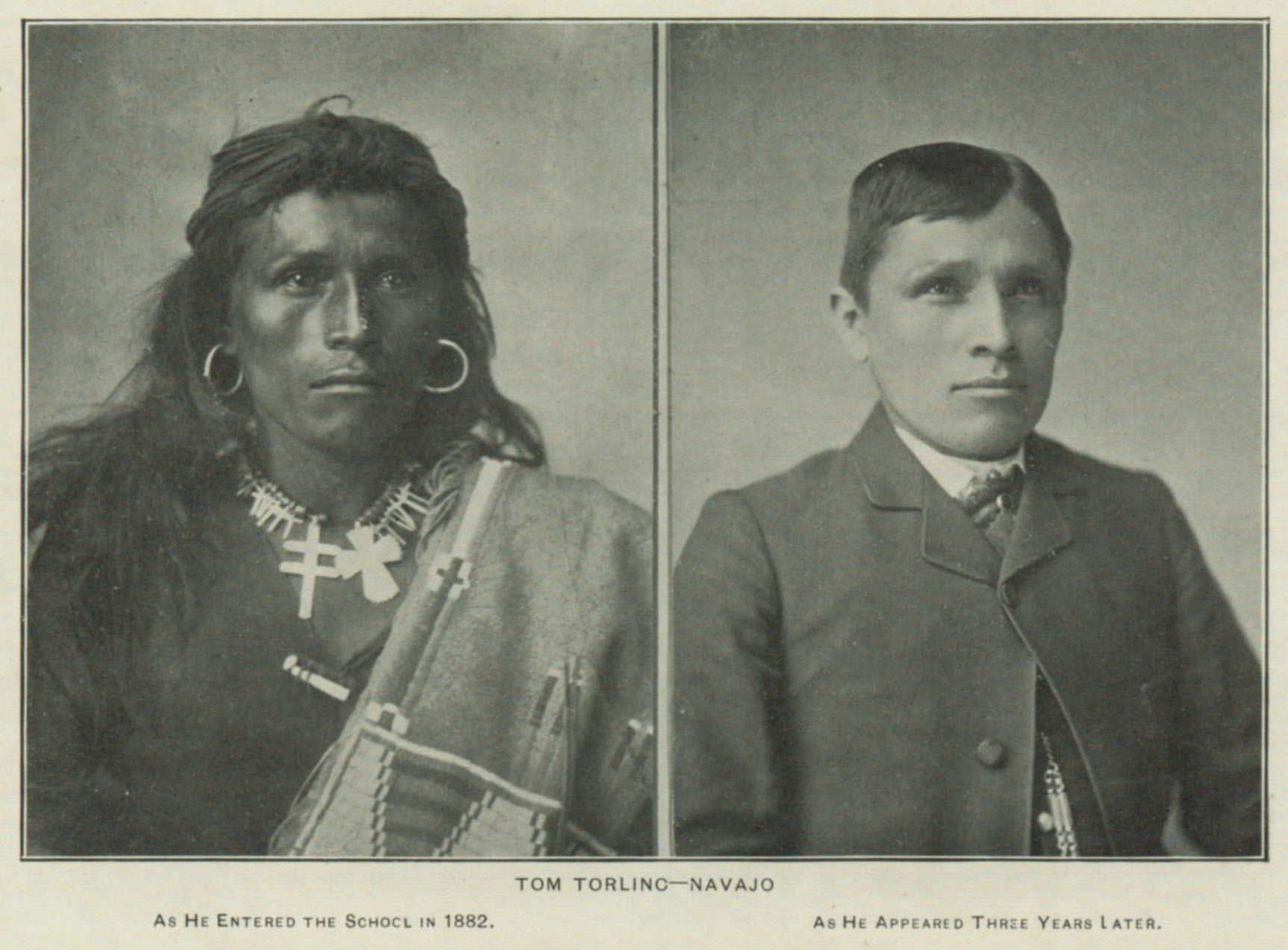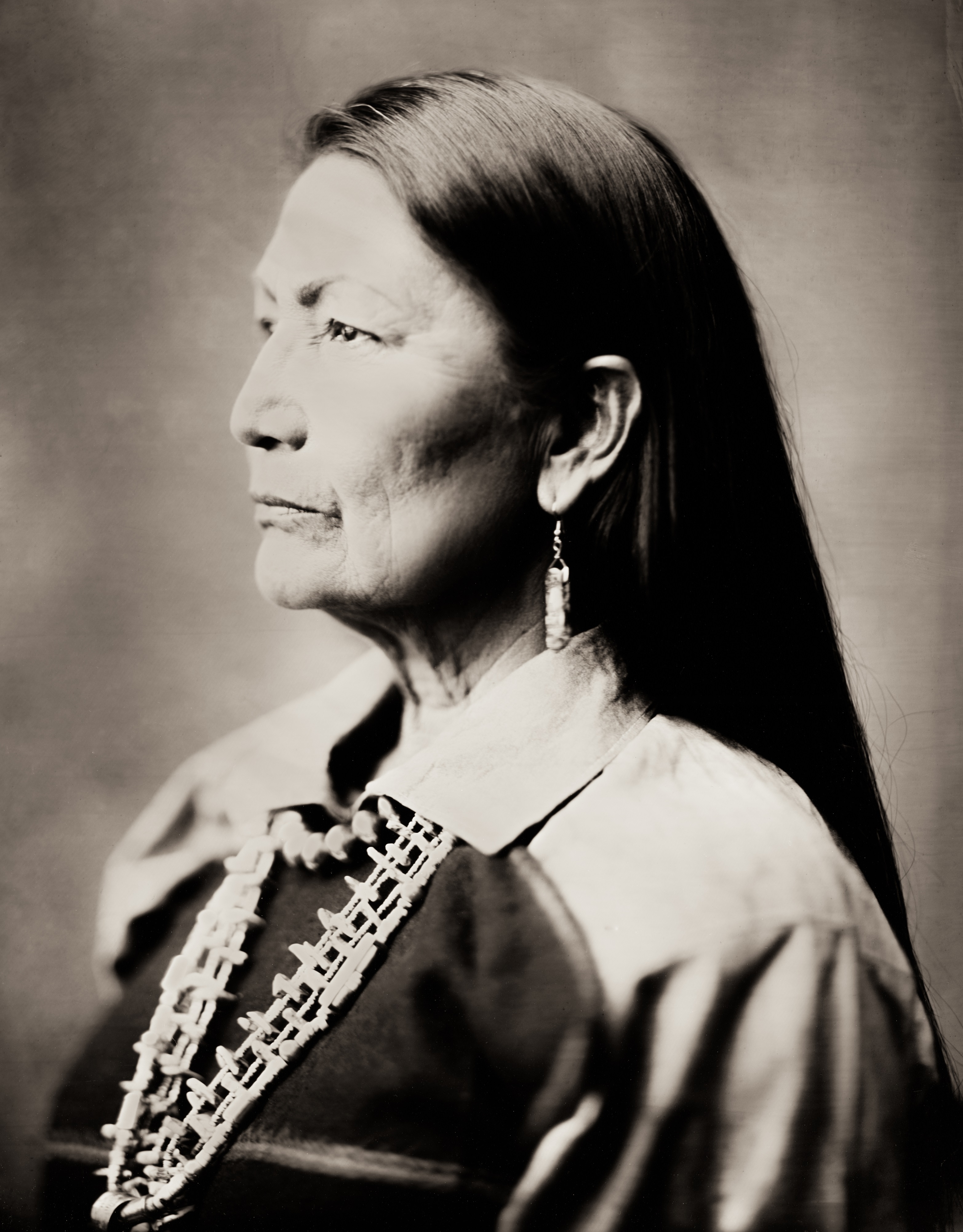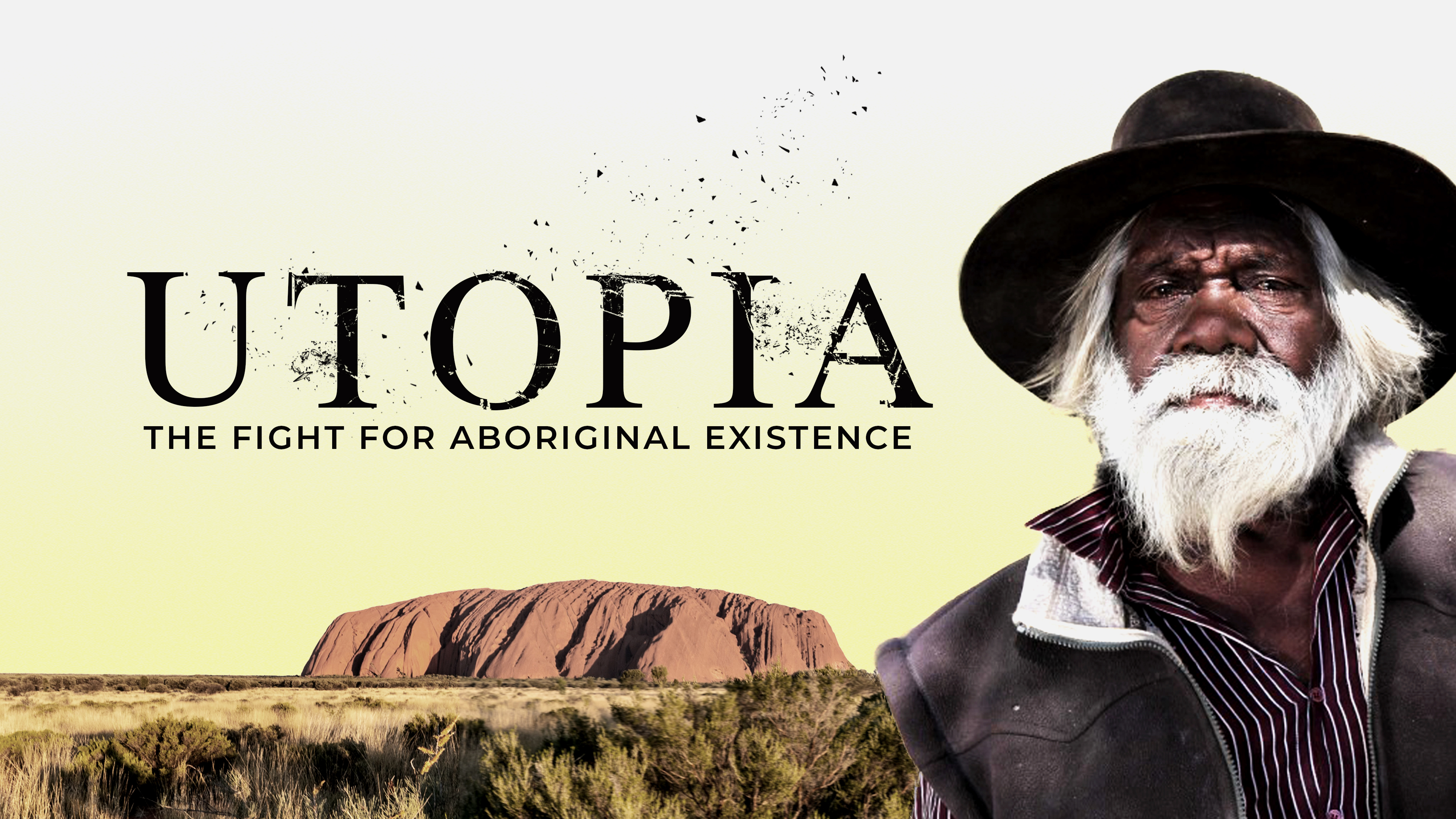Canada and the United States attempted systematic eradication of Indigenous identity through various methods. One was forced education at residential schools. Is authentic reconciliation possible?
◊
What happens when you are convinced you have the truth? I’m talking capital T Truth. When you just know you are right? If we’re talking about a low-stakes situation, you probably don’t feel much more than annoyed if someone doesn’t recognize the obvious. If the stakes are high enough, however, things are very different.
Throughout human history, people have perpetrated horrific acts in the name of Truth – its possession or pursuit. The Spanish Inquisition. The Nazi “medical experiments.” The Tuskegee Syphilis Study.
Learn about the plight of Australia's Indigenous people in this riveting MagellanTV documentary.
Perhaps less well-known is the history of the residential schools in Canada and the United States. For those Indigenous children who survived – and for their families and community members – life as they might have known it was forever stolen. For those who died in these places, all that’s left are families’ memories and remains buried in unmarked graves, but forgotten by those who were supposed to care for them.
Indigenous Schools: Eradication as Assimilation
For decades, Canadian and U.S. governments removed Indigenous children from their families, their communities, their land — from everything they knew. Funded and run by the governments and religious groups, these boarding schools stripped children of their identities in attempts to assimilate them into the dominant culture. How could this happen? And how could these now infamous institutions run continuously for well over 150 years?
The Formation of Canada’s Indigenous Residential Schools
The Gordon Residential School in Punnichy, Saskatchewan, which closed in 1996, was one of at least 130 such institutions in Canada, attended by approximately 150,000 children over the course of the school's existence. Experts believe 5,000 died, though incomplete records mean the number is an estimate.
Even before the introduction of Western-style education, life for Indigenous Peoples was inexorably altered. Along with the appearance of European strangers came a range of utterly new experiences and challenges. Descendants of the original European settlers became French and British colonists, and colonists eventually became Canadians whose public servants all swore allegiance to the British Crown.
Beginning in the early 1880s, Canada’s Inuit, First Nations, and Métis Nation populations were systematically dismantled by government-sponsored, church-run residential schools. Such institutionalization reflects at least two major motivations. The Canadian government created policies aimed at economic self-sufficiency (i.e., assimilation into civilized society) through education, thereby reducing Indigenous Peoples’ reliance on public funds.
The concept of schools for Indigenous children goes back to Canada’s colonial times with the Mohawk Institute in Brantford, Ontario. Begun in 1828 as a day school for Six Nations boys, the Anglican Church, which established the school, started enrolling boarders in 1831.
That such reliance was the direct result of conquests seems to have gone unrecognized. Canada’s Indian Act of 1876 outlawed self-governance, and the 1884 amendments to the act only made matters worse: Indigenous children between ages seven and 16 were required to attend the residential schools. By the early 1930s, school principals assumed legal guardianship of children, whose parents were forced to surrender legal custody.
.jpg)
..._E?le?ves_cris_et_leur_professeure_au_Pensionnat_indien_de_All_Saints,_(E?cole_missionnaire_anglicane)..._(14185268954).jpg)
..._E?le?ves_cris_et_leur_professeure_au_Pensionnat_indien_de_All_Saints,_(E?cole_missionnaire_anglicane)..._(14185268954).jpg) Officials and schoolchildren outside Providence Mission Indian Residential School, Fort Providence, Northwest Territories, circa 1920 (Credit: F. H. Kitto, via Wikimedia Commons)
Officials and schoolchildren outside Providence Mission Indian Residential School, Fort Providence, Northwest Territories, circa 1920 (Credit: F. H. Kitto, via Wikimedia Commons)
The Canadian government also saw conversion to Christianity as a vehicle for assimilation to the dominant culture. The federal level of government provided most of the funding, but provincial governments and Christian church authorities also contributed. For their part, the Christian missionaries and churches (Catholic, Anglican, Presbyterian, and Methodist) that administered custodial schools viewed contributing to educational policy as another way to save souls.
Life in Canadian Residential Schools
As if being forcibly removed from their families and communities were not sufficiently traumatic for Indigenous children, survivors of the residential schools recount many abuses. Traditional dress was banned and school uniforms required. Beatings and sexual assault were common, and children speaking their original languages were punished, sometimes by having needles pushed through their tongues. More generally, rule breakers were locked in basements, cages, or closets.
In his Recollections of an Assiniboine Chief, Ochankuga’he writes, “In 1886, at the age of twelve years, I was lassoed, roped and taken to the Government School at Lebret.…In keeping with the promise to civilize the little pagan, they went to work and cut off my braids, which, incidentally, according to the Assiniboine traditional custom, was a token of mourning — the closer the relative, the closer the cut. After my haircut, I wondered in silence if my mother had died.”
Daily life was divided into two parts: a half day in the classroom and the other half at work. So, activities were part of unlearning one’s identity. These activities, ostensibly aimed at preparing Indigenous children for success as adults in a civilized society, were also divided along traditional gender roles: Girls learned homemaking skills like sewing and cooking, while boys learned manual skills like carpentry and farming. Over time, a child’s entire frame of reference, or orientation in the world, was obliterated, replaced with someone else’s vision of how to live.
 Carlisle Indian School, Carlisle, PA Ironing Class (Credit: Frances Benjamin Johnston, via Library of Congress)
Carlisle Indian School, Carlisle, PA Ironing Class (Credit: Frances Benjamin Johnston, via Library of Congress)
Many children also ended their time at a residential school without any substantive education and, worse still, feeling lost between two worlds. Schools were underfunded and overpopulated. Moreover, the assertion of European and Christian superiority was deeply rooted in the schools, which inevitably led to further dehumanization and degradation of Indigenous people. “There he is, hanging in the middle of two cultures and he is not a whiteman and he is not an Indian,” declared John Tootoosis, Jr., whose father agreed to send his two sons to a residential school.
The Formation of the United States’ Indian Residential Schools
In the early years of the United States, tribal lands were taken by several means: war, broken treaties, and new laws. In the same period, Indigenous children were sent to residential schools, which physically separated Indigenous children from their homelands.
“Kill the Indian in him, and save the man.” —Capt. Richard Henry Pratt, 1892
In the U.S., the Civilization Fund Act of 1819 compelled Indigenous families to send their children to schools. In that legislation, Congress authorized funding of schools on Native American reservations, and the act was later used to fund Indigenous boarding schools. As was later the case in Canada, the schools were often run by religious authorities.
By the mid-1920s, more than 80 percent of Indigenous school-age children were in boarding schools. More than 500 such schools were funded by the government and run by church organizations across 29 states. Moreover, despite the radical reduction of the Indigenous populations wrought by numerous wars, the ripple effects of the Indian boarding schools were – and still are – widespread. Many schools closed by the end of the 1970s, but some, like the Riverside Indian School in Oklahoma, still existbut only after having made radical reforms.
Life in U.S. Residential Schools
“Kill the Indian in him, and save the man,” declared Captain Richard Henry Pratt in an 1892 speech given at the National Conference of Charities and Correction. Long before Pratt’s now infamous slogan, most settlers in what would become the United States firmly believed in the superiority of their beliefs and practices. Not surprisingly, part of the educational process at U.S. Indigenous boarding schools involved often-brutal efforts to inculcate specific values.
 (Credit: John N. Choat, via Dickinson Archives & Special Collections)
(Credit: John N. Choat, via Dickinson Archives & Special Collections)
Daily activities imitated military life, from marching to wearing uniforms. Indigenous children in U.S. boarding schools were segregated by gender, punished severely for speaking their tribal language, and suffered myriad other abuses. The parallels between the catastrophically damaging Canadian and U.S. Indigenous residential school systems are stunning, but that’s where the comparison likely ends – at least if we’re talking about how each country has addressed the horrors visited upon fellow human beings.
Is Reconciliation Possible?
In 1996, Canada’s Royal Commission on Aboriginal Peoples submitted a report on its mandate to understand the “original historical nations” because “how Canada relates to [those nations] defines in large measure its sense of justice and its image in its own eyes and before the world.” Later, from 2008 to 2015, the Truth and Reconciliation Commission of Canada investigated its own history, concluding that Indigenous residential schools were intended as engines of genocide. In 2008, Canadian Prime Minister Stephen Harper apologized to Inuit, First Nations, and Métis Nations students of Indigenous residential schools. In addition, Canada has restructured formal relations with Indigenous Peoples and Nations.
The United States has not undertaken comparable efforts. There has been more than one attempt to introduce the Truth and Healing Commission on Indian Boarding School Policies in the United States Act in Congress, but thus far, the only existing formal accounting is from the Department of the Interior, which published a 2022 report on an investigation into the U.S. Indigenous boarding school system.
 Deb Haaland, former Congresswoman from New Mexico, became the first Native American to become a cabinet member. She is the Biden Administration’s Secretary of the Interior (Credit: Shane Balkowitsch, via Wikimedia Commons)
Deb Haaland, former Congresswoman from New Mexico, became the first Native American to become a cabinet member. She is the Biden Administration’s Secretary of the Interior (Credit: Shane Balkowitsch, via Wikimedia Commons)
The strength and resilience of a country can be found not only in how it meets challenges like catastrophes, but also in how it confronts its own past and holds itself accountable. Yes, it is good for a country to laud an individual who demonstrates the moral courage and cherished ideals of that nation, a person such as Martin Luther King, Jr. But how strong is that country when it all but entirely refuses to face up to its moral transgressions in meaningful ways?
In both Canada and the United States, archaeologists and other experts have been working with Indigenous communities to identify the sites where Indigenous children were buried in unmarked graves. Whenever possible, remains have been identified and returned to families. In June 2021, for example, the New York Times reported that 751 remains of mostly Indigenous children were discovered at the site of a former school in Canada. Attempts to repatriate them and others continue.
This work is, however, not only very recent, but also bound to be incomplete. Original buildings are long-since gone, some schools sprawled over hundreds of acres, and there are no conclusive records of the numbers of children who were consigned to these schools, not to mention the thousands who never returned home.
Ω
Editorial Note: The use of the term, “Indian” throughout this article has been amended to “Indigenous,” except where the reference is to a title term.
Mia Wood is a philosophy professor at Pierce College in Woodland Hills, California. She is also a MagellanTV staff writer interested in the intersection of philosophy and everything else. Among her relevant publications are essays in Mr. Robot and Philosophy: Beyond Good and Evil Corp (Open Court, 2017), Westworld and Philosophy: Mind Equals Blown (Open Court, 2018), Dave Chappelle and Philosophy: When Keeping It Wrong Gets Real (Open Court, 2021), and Indiana Jones and Philosophy: Why Did It Have to Be Socrates? (Wiley-Blackwell, 2023).
Title Image: Yuma Indian girls at the Indian School at Yuma, c. 1900 (Credit: C.C. Pierce)
.jpg)
.jpg)
